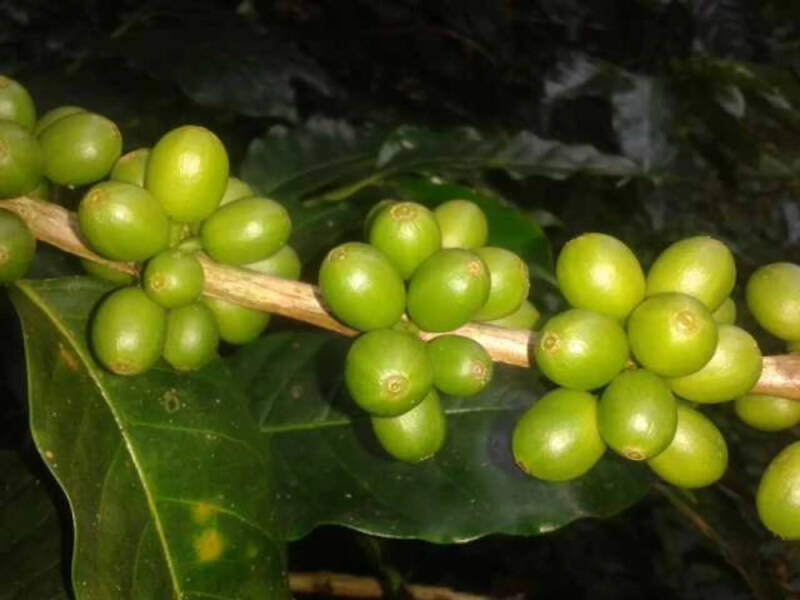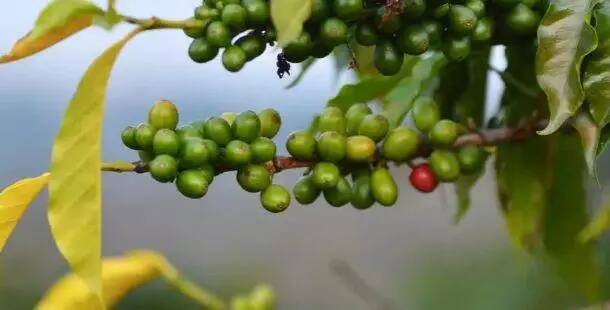Introduction to the main Coffee varieties grown in Central America and Costa Rica
Costa Rica, located in Central America, is the 14th largest coffee producer in the world. Although it has a small land area, it has vast forests and fertile volcanic soil, making it a very suitable place for coffee cultivation.
Coffee was grown in Costa Rica as early as the early 19th century. And the government is so supportive of coffee cultivation that the Coffee Defense Agency (Institute for the Defence of Coffee) was established in 1933 to protect small coffee farmers from exploitation, which later became the Costa Rican Coffee Institute (ICAFE) in 1948 and is still in operation today.
In some impressions, the coffee varieties grown in American coffee producing areas are mainly Kaddura, Kaduai and bourbon. However, this year, coffee research centers in many producing countries have sprung up, and more and more high-quality varieties have emerged through the hybridization of some varieties. At present, there are many other high-quality varieties such as Kaddura and Bourbon in Costa Rica.
There is also the name La Luisa or Villalobos Bourbon in the Villa Sarchi industry. It was first discovered in the city of Sarchi in Costa Rica in the 1950s. It is a natural variety of bourbon, with genetic mutations that cause plants to become smaller. This variety is well adapted to the highest altitude and strong wind, but is susceptible to leaf rust and coffee berry disease. It is mainly grown in Costa Rica and was introduced to Honduras by IHCAFE in 1974, but not widely cultivated in other regions.

VeneciaVenecia Vanessa was found in the Kaddura natural mutant in the San Carlos San Carlos region of Costa Rica's central valley. It is a new breed of Kaddura coffee released by the Costa Rican Coffee Research Center (ICAFE). Like Kaddura, Venecia coffee has the advantages of high yield, strong rain resistance and disease resistance. It takes three years for Venecia coffee trees to begin to bear fruit, with large beans and hard kernels. In 1991, ICAFE began to study and screen this variety of coffee beans in Turrialba, Coto Brus and Perez Zeledon regions of Costa Rica. After years of research, Venicia varieties in Perez Zeledon region not only have richer flavor, but also have better yield and resistance to diseases and insect pests.

H1 this variety is a hybrid of T5296 of F1 first generation hybrid series and Ethiopian local variety Rume Sudan, also known as Centroamericano. It is a variety that is more resistant to leaf rust and has high yield. When planted at high altitude and carefully managed, it will have very good quality. The variety was discovered by farmers in Central America in 2010, but it is commercially available only to a small number of farmers and specific countries. At present, the Costa Rican Mozart from Qianjie is the H1 variety, which is treated with grape dried honey. The palate has complex floral aromas and fermented sauce, with sour notes of carambola and berries, sweet and sweet like raisins and dried fruits.
Important Notice :
前街咖啡 FrontStreet Coffee has moved to new addredd:
FrontStreet Coffee Address: 315,Donghua East Road,GuangZhou
Tel:020 38364473
- Prev

Now you have to weigh it when you go to Ruixing to buy coffee?
This week Ruixing launched a new series of drum deer metal badges and launched a campaign to buy two cups of badges and give them away. The naive and cute fawn is paired with a textured metal material, and the drum deer series badge successfully attracted a large wave of netizens to place orders. (the picture is from Ruixing Little Red Book account) however, you want to get the metal you want.
- Next

Brazil exports more Robusta through Victoria Harbour, but the future export outlook is uncertain.
Recently, Brazil released the export of Victoria Harbour. In November, Victoria Harbour, Brazil, exported more than 844000 bags (60 kg each) of coffee, the fourth largest month in the port's history, compared with 1 million bags in August and 968000 in September 2002.
Related
- Is espresso stored overnight in the refrigerator harmful to your body? Is frozen coffee better than freshly ground coffee?
- What parameters and proportions of water temperature should be used to grind and brew fresh coffee beans? Why can't I drink freshly roasted coffee right away?
- Customers have "changed" Manner's new products! Shop assistant: Please don't mess around!
- Remove sockets in customer areas at Starbucks stores?! Netizen: I won't go if I really tear it down
- What is the difference between the taste steps of sun-dried coffee and washed coffee? Why is sun-cured coffee sweeter and washed coffee sour?
- The recipe for salty grapefruit dirty is revealed! Coffee Festival salty grapefruit dirty coffee making materials parameters ratio milk share!
- How about the flavor of Sunlight 74158 at Sidamo Banshaha Mathieu Processing Factory in Ethiopia? 74158 Share the proportion of coffee brewing parameters!
- What effect does Italian American coffee with filter paper have? Will coffee taste better if it is put on filter paper at the bottom of the powder bowl?
- What is the color difference in coffee beans? What are the characteristics of honey processed coffee beans? Why are the anaerobically treated coffee beans uneven in color?
- How does novice Xiaobai quickly get started and make coffee? Newbies learn to make coffee by hand and share the specific steps and process process!

